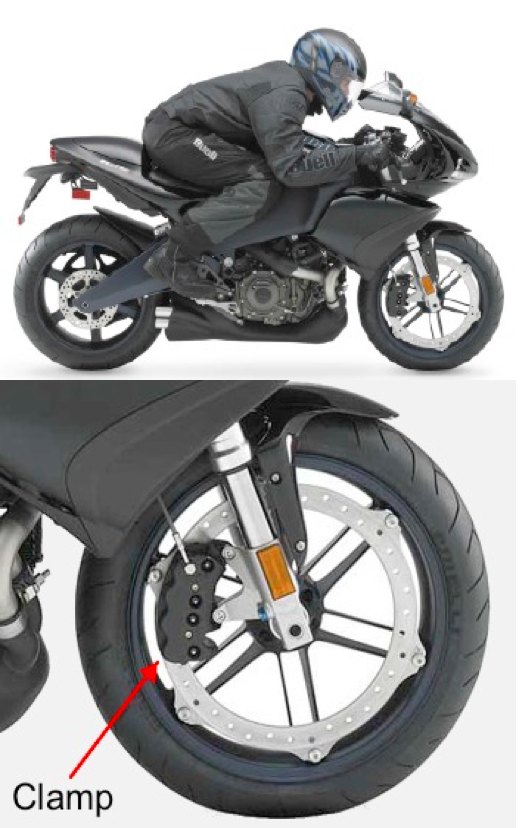
Teaching Physics with the Physics Suite
Edward F. Redish
Home | Action Research Kit| Sample Problems | Resources | Product Information
Problems Sorted by Type | Problems Sorted by Subject | Problems Sorted by Chapter in UP
 |
Teaching Physics with the Physics Suite Edward F. Redish Home | Action Research Kit| Sample Problems | Resources | Product Information |
Problems Sorted by Type | Problems Sorted by Subject | Problems Sorted by Chapter in UP |
Two students have just finished analyzing the forces on a passenger and the parts of an accelerating automobile. But in this problem they treated the car and the wheels as a single object. Snooki says, “But if we were stopping we would have to consider the brakes.” Ronnie knows that his motorbike has disc brakes. A clamp, when open, allows the wheel to spin freely through it. But when he brakes, the clamp squeezes tightly together and creates a strong frictional force of the clamp on the wheel. He says, “I think we can work it out how the bike stops.” Let’s help them fill in their reasoning. A. Consider the motorbike (= “the rest of the bike not including the clamp or wheel”), the clamp, and the wheel. While the brake is being squeezed to slow down the bike, draw a system schema and free body diagrams for the horizontal and vertical forces on the clamp and on the wheel. Be sure to label each force with the type of force it is, what is causing the force and what is feeling the force. Only show the forces in the plane of the wheel. (Don’t bother showing the forces perpendicular to that plane such as e.g. the normal forces the clamp exerts on the wheel.) |
 |
B. Ronnie says, “It’s the frictional force of the clamp on the wheel that slows the car.” Snooki disagrees. She thinks that the friction force of the road is what slows the car. Are either of them correct or is it something else? Explain your reasoning.
C. Snooki recalls that lots of times when Ronnie has made quick stops, he has left a track of rubber behind the bike. Does this fact support her claim or his? Explain your reasoning.
Page last modified January 15, 2013: D41